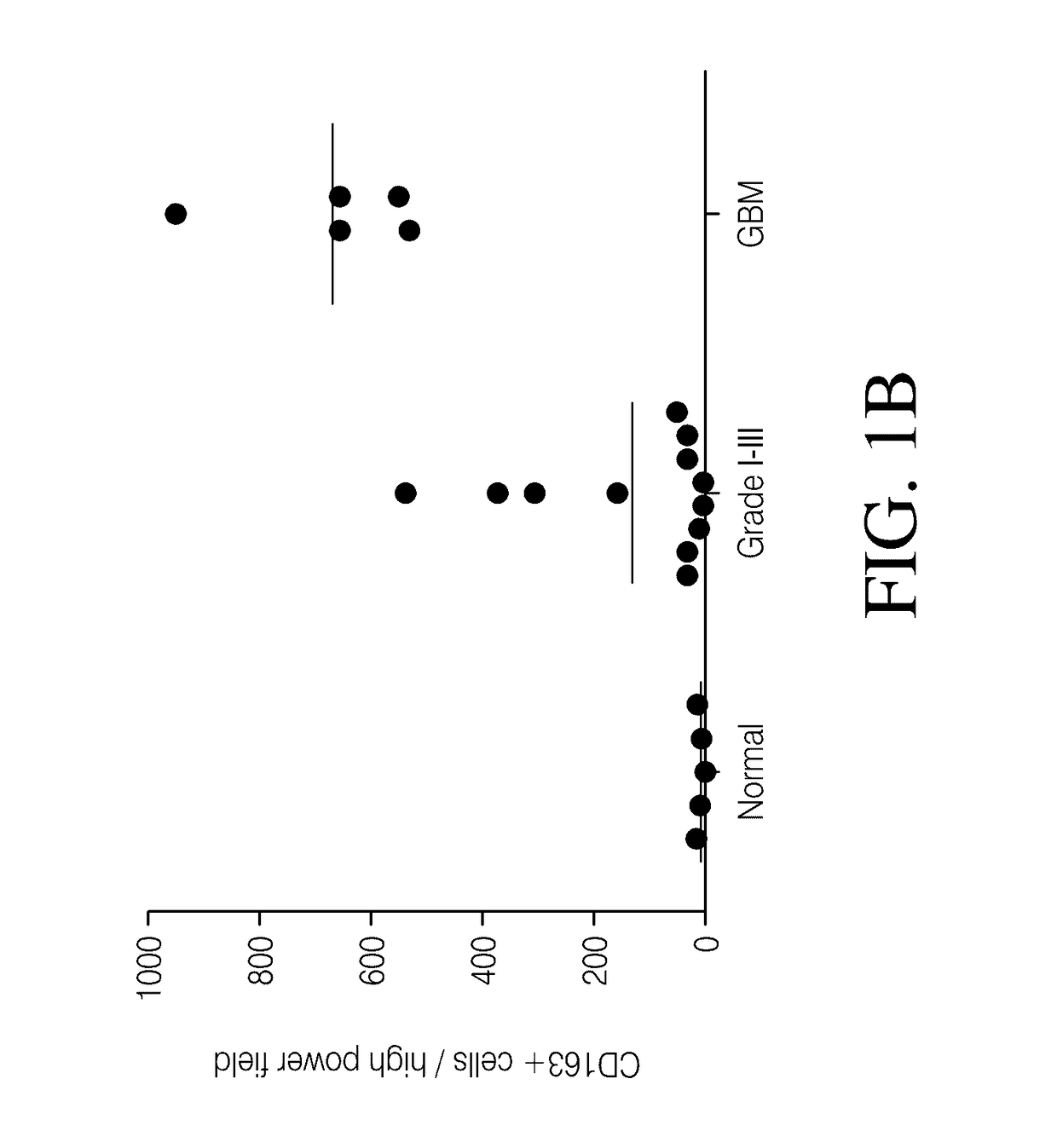Genetic engineering of macrophages for immunotherapy
a gene engineering and immunotherapy technology, applied in the field of gene engineering of macrophages for immunotherapy, can solve the problems of unfavorable immunotherapy for glioblastoma (gbm), and unfavorable solid tumor treatment. achieve the effects of reducing immune suppression, accelerating tumor growth, and enhancing tumor-directed immune activity
- Summary
- Abstract
- Description
- Claims
- Application Information
AI Technical Summary
Benefits of technology
Problems solved by technology
Method used
Image
Examples
Embodiment Construction
[0111]Although the invention is described in various exemplary alternatives and implementations as provided herein, it should be understood that the various features, aspects, and functionality described in one or more of the individual alternatives are not limited in their applicability to the particular alternative with which they are described. Instead, they can be applied alone or in various combinations to one or more of the other alternatives of the invention, whether the alternatives are described or whether the features are presented as being a part of the described alternative. The breadth and scope of the present invention should not be limited by any exemplary alternatives described or shown herein.
[0112]Aspects of the present invention relate to methods, genetically modified immune cells and compositions for modifying the tumor environment. In particular, methods, cells and compositions for modifying the tumor environment comprise immune cells that can encode a protein t...
PUM
 Login to View More
Login to View More Abstract
Description
Claims
Application Information
 Login to View More
Login to View More - R&D
- Intellectual Property
- Life Sciences
- Materials
- Tech Scout
- Unparalleled Data Quality
- Higher Quality Content
- 60% Fewer Hallucinations
Browse by: Latest US Patents, China's latest patents, Technical Efficacy Thesaurus, Application Domain, Technology Topic, Popular Technical Reports.
© 2025 PatSnap. All rights reserved.Legal|Privacy policy|Modern Slavery Act Transparency Statement|Sitemap|About US| Contact US: help@patsnap.com



